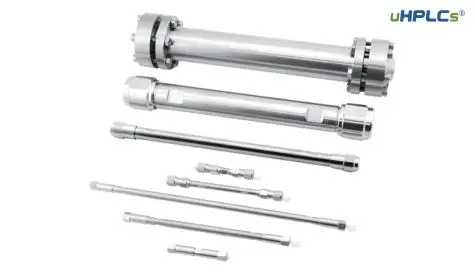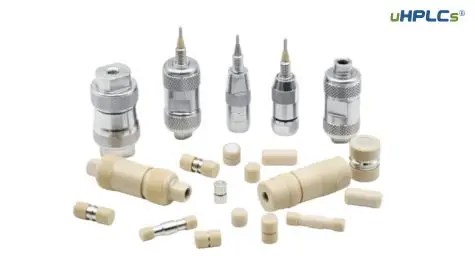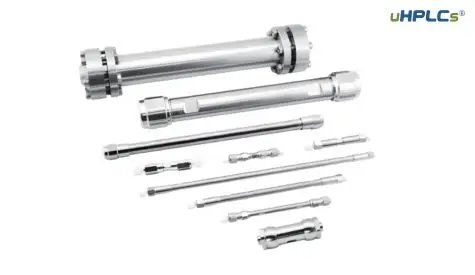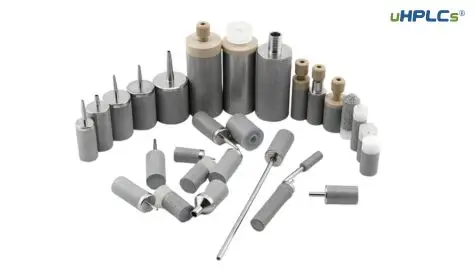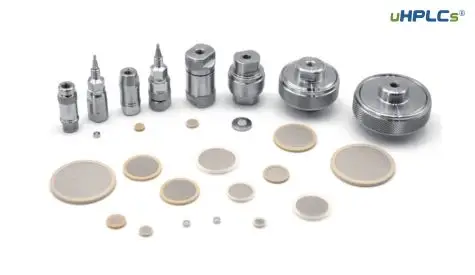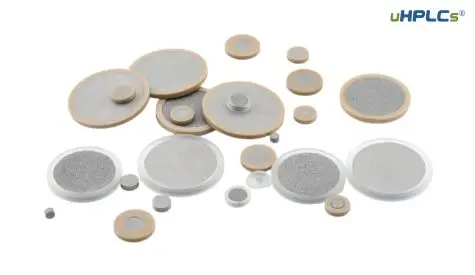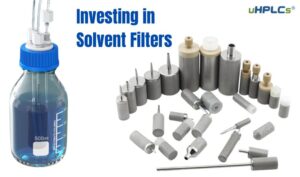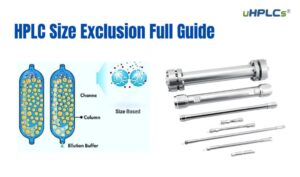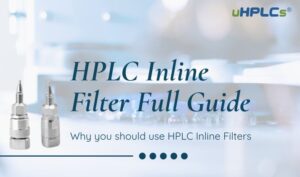High-Performance Liquid Chromatography: Unveiling the Hidden World
High-Performance Liquid Chromatography (HPLC) is a powerful analytical technique that separates, identifies, and quantifies the components of a mixture based on their interactions with a stationary phase. Imagine it as a microscopic obstacle course where molecules race through a packed bed, separated by their unique abilities to navigate the twists and turns.
Think of a delicious cup of coffee. HPLC can unravel the complex blend of flavors and aromas, identifying the caffeine, antioxidants, and other goodies that contribute to its unique taste. In the realm of science, HPLC plays a crucial role in various fields, from drug discovery and environmental analysis to food safety and forensic science.
Why is HPLC so significant?
- Versatility: It can handle a wide range of samples, from small molecules to large biomolecules.
- Sensitivity: It can detect minute amounts of components, even in the parts per billion range.
- Accuracy: It provides reliable and reproducible results.
- Speed: Analyses can be completed in minutes or even seconds.
The Heart of the Matter: Column Hardware
Just like a car needs a good engine, HPLC relies on a robust and efficient column to perform its magic. The column hardware essentially houses the separation magic:
- Column tube: This stainless-steel tube holds the stationary phase, the key player in the separation process.
- Frits: These porous discs at the ends of the column prevent the packing material from escaping while allowing the mobile phase to flow through.
- Fittings: These connectors ensure a leak-free connection between the column and the rest of the HPLC system.
The quality and specifications of these components significantly impact the performance of the HPLC analysis. A well-packed column with the right hardware delivers:
- Optimal separation: Different molecules interact differently with the stationary phase, leading to their separation as they travel through the column.
- High resolution: Sharper peaks on the resulting chromatogram indicate better resolution, allowing for clear distinction between closely related components.
- Reproducible results: Consistent performance ensures reliable data that can be compared and trusted.
In essence, HPLC column hardware is the unsung hero of the separation process. It provides the stage where the microscopic dance of molecules unfolds, revealing the hidden secrets within a complex mixture.
Demystifying the Engine of Separation: A Look at HPLC Column Hardware
HPLC column hardware, though seemingly simple, plays a critical role in the intricate dance of molecule separation. Just like a well-oiled engine propels a car, these precise components work in harmony to achieve chromatographic magic. So, let’s dive into the heart of HPLC and understand the basic components and their roles:
1. Stainless Steel Column Tube:
Imagine a slender steel cylinder, typically 3-30 cm long and 2-5 mm in diameter. This column tube (Figure 1) forms the backbone of the hardware, housing the separation bed (stationary phase) where the action unfolds. Its smooth, inert surface ensures minimal interaction with the sample, while its high pressure tolerance withstands the pumping forces of the HPLC system.

2. Frits:
Think of frits as the gatekeepers of the column. These porous discs, usually made of polyetherylketone (PEEK) or polytetrafluoroethylene (PTFE), sit at both ends of the tube. Their tiny pores allow the mobile phase to flow freely while stopping the precious stationary phase from escaping. Different frit porosities cater to specific particle sizes of the packing material, ensuring optimal performance.
3. End Fittings:
Connecting the column to the HPLC system requires secure and leak-proof fittings. These metal connectors screw onto the ends of the tube, housing the frits and providing ports for the mobile phase to enter and exit. Different fitting types like fingertight or wrench-tight cater to user convenience and pressure requirements.
4. Guard Cartridge (Optional):
Imagine a smaller, sacrificial column standing guard before the main event. A guard cartridge (Figure 4) houses a pre-packed bed of stationary phase and sits in-line before the analytical column. Its purpose? To protect the precious analytical column from contaminants in the sample, prolonging its lifespan and ensuring optimal performance.

The Orchestrated Dance:
Now, let’s see how these components work together in the HPLC ballet:
- Sample injection: The sample enters the mobile phase stream and is injected into the column.
- Mobile phase flow: The mobile phase, typically a liquid mixture, carries the sample through the packed bed of the stationary phase.
- Differential interaction: Different molecules in the sample interact with the stationary phase to varying degrees, causing them to travel at different speeds.
- Separation: Faster-moving molecules elute first, followed by slower ones, resulting in separation as they exit the column.
- Detection: The separated components reach the detector, generating a signal that translates into a chromatogram, the fingerprint of the separation.
In conclusion, HPLC column hardware, though seemingly simple, plays a crucial role in the separation process. Each component, from the sturdy tube to the vigilant frits, contributes to the smooth flow and efficient separation of molecules, revealing the hidden secrets within complex mixtures. Remember, understanding these components is the first step to mastering the art of HPLC!
Traditional vs. Modern HPLC Columns
The world of HPLC columns is a diverse one, offering a plethora of options tailor-made for specific separation needs. Understanding the difference between traditional and modern columns empowers you to choose the perfect tool for your analytical journey.
1. Traditional Columns: The Pillars of HPLC
These trusty veterans have stood the test of time, forming the foundation of numerous chromatographic successes. Here’s a breakdown of their features:
- Particle size: Traditionally, particles range from 5 to 10 µm, offering a good balance between resolution and pressure.
- Column dimensions: Standard dimensions are 4.6 mm inner diameter (ID) and 250 mm length, providing a good compromise between efficiency and sample capacity.
- Stationary phases: Silica and polymer-based phases like C18 are common, catering to a broad range of analytes.
- Applications: Ideal for routine analyses, purity checks, and method development due to their reliability and moderate cost.
2. Modern Columns: Pushing the Boundaries of Separation
Driven by technological advancements, modern columns offer enhanced performance and cater to more specialized needs:
- Particle size: Sub-2 µm particles are gaining traction, providing significantly higher resolution for complex separations, albeit at higher pressure.
- Column dimensions: Shorter columns (50-150 mm) are popular for faster analyses, while narrower columns (1-2 mm ID) offer improved sensitivity.
- Stationary phases: Innovative phases like monolithic columns and mixed-mode phases cater to unique applications and challenging separations.
- Applications: Ideal for high-throughput analyses, biomolecule separations, and trace-level detection due to their advanced capabilities.
Comparing the Champions:
| Feature | Traditional Columns | Modern Columns |
|---|---|---|
| Particle size | 5-10 µm | Sub-2 µm |
| Column dimensions | 4.6 mm ID x 250 mm | 1-2 mm ID x 50-150 mm |
| Resolution | Moderate | High |
| Pressure drop | Low | High |
| Cost | Relatively lower | Higher |
| Applications | Routine analyses, purity checks | High-throughput, complex separations, trace-level detection |
Material Matters: Deciphering the Code of HPLC Column Choices
In the intricate world of HPLC, the material forming the column walls plays a crucial role in the separation dance. From the robust strength of stainless steel to the transparency of glass and the versatility of polymers, each material offers unique advantages and limitations. Let’s dive into the material code and unravel their secrets:
1. Stainless Steel Columns: The Ironclad Workhorses
- Pros:
- Durability: Withstands high pressures and temperatures, making them ideal for diverse applications.
- Chemical compatibility: Inertness towards most solvents and analytes, offering broad applicability.
- Cost-effective: Typically more affordable than other material options.
- Cons:
- Opacity: Limits visual monitoring of the packing and flow, hindering troubleshooting.
- Metal-ion leaching: Can interfere with certain analytes, requiring careful selection of solvents and buffers.
2. Glass and Polymer Columns: The Transparency Champions
- Pros:
- Transparency: Allows visual observation of the packing and flow, facilitating troubleshooting and leak detection.
- Chemical compatibility: Some polymers offer unique solvent compatibility compared to stainless steel.
- Lower metal-ion leaching: Suitable for analyses sensitive to metal ions.
- Cons:
- Fragility: More susceptible to breakage compared to stainless steel, requiring careful handling.
- Pressure and temperature limitations: May not withstand high pressures and temperatures as well as stainless steel.
- Cost: Can be more expensive than stainless steel, especially for high-quality polymers.
3. Decoding the Material Choice Symphony:
Choosing the right material hinges on a harmonious interplay of factors:
- Chemical compatibility: Ensure the material is compatible with your sample, mobile phase, and buffers.
- Pressure requirements: High-pressure applications might necessitate the robust strength of stainless steel.
- Temperature constraints: Some polymers might degrade at higher temperatures, limiting their utility.
- Visibility needs: Opt for transparent materials like glass or specific polymers if visual monitoring is crucial.
- Cost considerations: Balance material performance with your budget constraints.
Remember:
So, Actually there’s no one-size-fits-all solution. Understanding the strengths and limitations of each material empowers you to select the perfect column that orchestrates a flawless separation performance in your HPLC symphony.
HPLC Column Hardware Dimensions and Their Impact
In the microscopic ballet of HPLC separations, every dancer – the molecules, the stationary phase, and even the column itself – plays a crucial role. And just like choreography, the precise dimensions of the column significantly impact the performance of the dance. Let’s delve into the intricate world of column dimensions and understand how they influence the key parameters of HPLC: resolution, speed, and pressure.
Popular HPLC Column Hardware Dimensions and Particle Sizes
| Hardware | Popular Length (mm) | Popular Diameter (mm) | Popular Particle Size (µm) |
|---|---|---|---|
| Traditional Columns | |||
| Analytical | 150, 250 | 4.6 | 5, 10 |
| Preparative | 250, 300 | 7.8, 10 | 5, 10 |
| Semi-preparative | 150, 250 | 10, 21.2 | 5, 10 |
| Modern Columns | |||
| UHPLC | 50, 100, 150 | 1, 2, 3 | 1.7, 2 |
| Microflow | 100, 150 | 0.5, 1 | 2, 3, 5 |
| Nano-flow | 50, 75 | 75-150 µm | 1.9, 3 |
| Specialty Columns | |||
| Chiral | 150, 250 | 4.6 | 5, 10 |
| Bio-inert | 150, 250 | 4.6 | 5, 10 |
| Ion-exchange | 150, 250 | 4.6 | 5, 10 |
| Size-exclusion | 150, 300 | 7.8, 10 | 5, 10 |
| HILIC | 150, 250 | 4.6 | 5, 10 |

HPLC Guard Columns (repeated for your convenience)
| Guard Column Type | Popular Length (mm) | Popular Diameter (mm) | Popular Particle Size (µm) |
|---|---|---|---|
| Standard Guard | 10 – 20 | Same as analytical column | Same as analytical column |
| Micro Guard | 2 – 5 | Same as analytical column | Same as analytical column |
| Mini Guard | 1 – 2 | Same as analytical column | Same as analytical column |

HPLC Frits and Solvent Inlet Filters
| Component | Popular Diameter (mm) | Pore Size (µm) |
|---|---|---|
| Frits: | ||
| Analytical Frit | 4.0 – 10.0 | 2 – 10 |
| Preparative Frit | 7.0 – 21.2 | 10 – 20 |
| Guard Frit | Same as guard column diameter | Same as analytical column pore size |
| Solvent Inlet Filters: | ||
| 1/16″ Filter | 1.59 mm | 0.45 – 45 |
| 1/8″ Filter | 3.18 mm | 0.45 – 45 |
| 1/4″ Filter | 6.35 mm | 0.45 – 45 |
Note: The choice of dimensions and pore size for both frits and filters depends on your specific needs and analytical setup. Always consult your HPLC instrument manual or experienced personnel for optimal selection.
Unveiling the World of Specialty HPLC Columns Hardware
HPLC columns, like dancers in a diverse troupe, come in various styles and forms, each specializing in a specific analytical challenge. Among this fascinating ensemble, specialty columns take center stage, showcasing unique attributes to tackle complex separations for specific samples. Let’s venture into their world and explore their captivating capabilities:
1. Chiral Columns: Unraveling the Handedness of Molecules
Imagine molecules like twins, mirror images of each other called enantiomers. Though identical in composition, they interact differently with the world, like a right and left hand. Chiral columns, with their specially designed stationary phases, play the role of discerning detectives, separating these seemingly identical twins.
- Applications: Widely used in pharmaceutical analysis, where distinguishing enantiomers can be crucial for drug effectiveness and safety. Other applications include food science, fragrance analysis, and pesticide detection.
- Unique features: Possess chiral selectors, molecules with a defined handedness, that selectively interact with one enantiomer over the other, leading to their separation.
2. Bio-inert Columns: A Gentle Touch for Delicate Biomolecules
Biological samples, like delicate butterflies, require a gentle touch in HPLC analysis. Bio-inert columns, with their specially modified surfaces, provide a welcoming stage for these sensitive molecules.
- Applications: Ideal for protein analysis, peptide separations, and enzyme studies.
- Unique features: Possess modified surfaces that minimize protein binding and denaturation, preserving the integrity of biomolecules during the separation process.
3. A Glimpse into the Specialty Column Galaxy:
The world of specialty columns extends far beyond chiral and bio-inert options. Here’s a sneak peek into some other captivating performers:
- Ion-exchange columns: Separate molecules based on their charge, ideal for inorganic and biological compound analysis.
- Size-exclusion columns: Separate molecules based on their size, perfect for characterizing polymers and proteins.
- Hydrophilic interaction liquid chromatography (HILIC) columns: Separate polar molecules based on their hydrophilicity, useful for drug analysis and metabolite separations.
Maintenance and Troubleshooting Tips
Just like a well-maintained stage ensures a smooth performance, proper HPLC column care keeps your analytical dance flowing flawlessly. In this final section, we’ll explore essential maintenance tips for extending column life and delve into common troubleshooting strategies to overcome any hiccups in your chromatographic journey.
1. Maintaining Peak Performance:
- Filtration: Always filter your mobile phase and sample solutions to prevent clogging and particle buildup in the column.
- Washing: Regularly flush the column with appropriate solvents after each run to remove residual sample components and prevent contamination.
- Storage: Store columns in the appropriate solvent or buffer depending on the stationary phase to prevent drying and maintain packing integrity.
- Guard column: Utilize a guard column to protect the analytical column from potentially damaging sample components.
2. When the Dance Falters: Troubleshooting Common Issues
- Decreased resolution: Possible causes include peak broadening due to sample overload, mobile phase incompatibility, or packing deterioration. Solutions involve optimizing sample amount, changing mobile phase conditions, or regenerating/replacing the column.
- Increased pressure drop: Clogged frits, air bubbles, or excessive particle buildup can be the culprits. Flushing the column, degassing the mobile phase, or replacing the frits might resolve the issue.
- Ghost peaks: Contamination from previous samples or system components can manifest as unwanted peaks. Flushing with appropriate solvents and optimizing cleaning protocols can rectify this.
- Baseline drift: Temperature fluctuations, mobile phase instability, or detector issues can cause baseline drift. Ensuring constant temperature, using fresh mobile phase, and calibrating the detector often provide solutions.
Remember:
Regular maintenance and proactive troubleshooting are key to preserving column performance and achieving reliable results. If you encounter any challenges, don’t hesitate to consult your HPLC instrument manual or reach out to experienced professionals for guidance.



